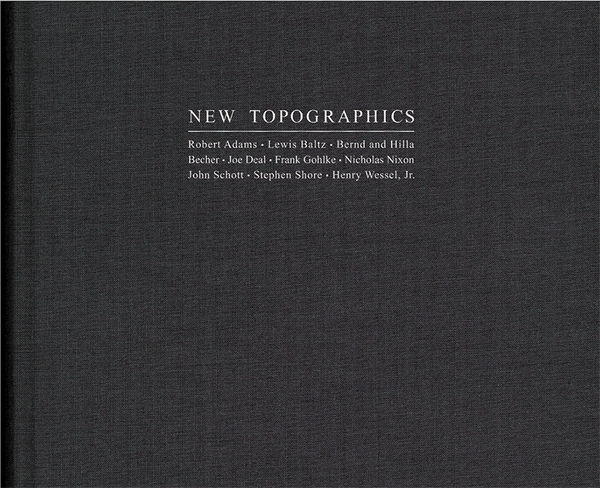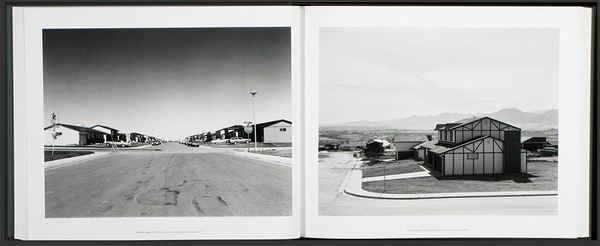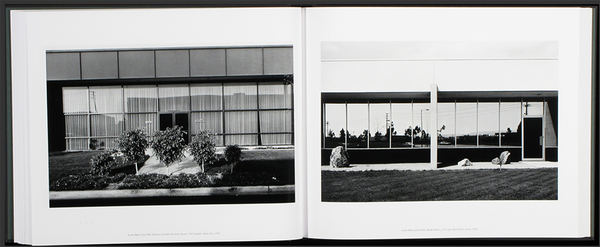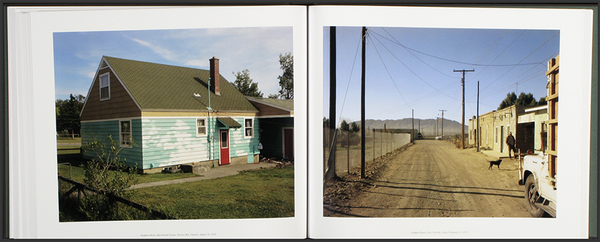pagine 304
dimensioni 24.5 × 29.5 cm, copertina rigida
lingua Inglese
ISBN 978-3-86521-827-8

Fotografo americano che si è concentrato sul cambiamento del paesaggio dell'Ovest americano registrandolo in oltre cinquanta libri. Il suo lavoro è diventato famoso a metà degli anni Settanta grazie al libro The New West (1974) e alla partecipazione alla mostra New Topographics: Photographs of a Man-Altered Landscape nel 1975. Ha ricevuto due borse di studio Guggenheim, una borsa di studio MacArthur, il premio fotografico Deutsche Börse e il premio Hasselblad. Vive con la moglie Kerstin ad Astoria, Oregon, Stati Uniti D'America.
Ha studiato all'Istituto d'Arte di San Francisco e ha conseguito un MFA presso la Claremont Graduate School nel 1971. Ha lavorato come fotografo freelance in California e ha insegnato fotografia presso varie istituzioni. Il suo lavoro è stato incluso in importanti mostre, tra cui New Topographics alla George Eastman House nel 1975. Ha prodotto fotografie in serie incentrate su un particolare tema o area geografica e di solito le ha pubblicate in forma di libro.
Bernhard Becher (20.08.1931 Siegen, Germania - 2.06.2007 Rostock, Germania), detto Bernd studia pittura all'Accademia delle Belle Arti di Stoccarda dal 1953 al 1956 per poi dedicarsi alla tipografia con l'austriaco Karl Rössing, presso l'Accademia di Düsseldorf. La sua famiglia da generazioni aveva lavorato nell'industria nell'area della Ruhr, che però proprio negli anni Cinquanta inizia a ridimensionarsi. Bernd decise quindi di dedicarsi a illustrazioni riguardanti l'ambiente lavorativo della famiglia. Nel 1957 fotografa una miniera che sarebbe stata dismessa in modo da usare le foto come materiale di lavoro; in seguito a questa esperienza, si accorge di provare interesse verso la fotografia. All'Accademia incontra la studentessa Hilla Wobeser che gli insegna fotografia e insieme realizzano il loro primo reportage fotografico nella regione della Ruhr. Hilla Wobeser ( 2.09.1934 Potsdam, Germania – 10.10.2015 Düsseldorf, Germania) si appassiona alla fotografia in giovane età grazie alla madre e allo zio, entrambi fotografi professionisti. Nel 1951 diviene apprendista di Walter Eichgrun, un noto fotografo, e allo stesso tempo frequenta, come aveva già fatto la madre, la scuola di fotografia al Lette-Verein di Berlino. Durante il lavoro con Eichgrun, Hilla esegue diversi incarichi come freelance e dimostra un forte interesse nella fotografia industriale. Diviene fotografa professionista nel 1954. Nel 1957 si trasferisce ad Amburgo e si iscrive all'Accademia di Düsseldorf, dove incontra lo studente di pittura Bernd Becher. Nel 1961 si sposano e cominciarono a lavorare come fotografi per l'agenzia pubblicitaria Troost di Düsseldorf.
Frank Gohlke è un fotografo americano di paesaggi. È stato premiato con due borse di studio Guggenheim, due borse di studio del National Endowment for the Arts e una borsa di studio Fulbright. Gohlke è stato uno dei dieci fotografi selezionati per partecipare a "New Topographics: Photographs of a Man-Altered Landscape", la storica mostra del 1975 al Museo Internazionale della Fotografia della George Eastman House.
Noto per il suo lavoro nella ritrattistica e nella fotografia documentaristica. Ha preferito lavorare con il grande formato perché gli ha permesso di stampare direttamente dai negativi. Nel 1975 inizia il progetto The Brown Sisters che comprende un solo ritratto di sua moglie e le sue tre sorelle, ogni anno, sempre poste nello stesso ordine da sinistra a destra.
Wessel si avvicinò alla fotografia quasi per caso durante gli anni della Pennsylvania State University, ma ne rimase subito affascinato. Inizia a fotografare seriamente nel 1967, ispirato dal lavoro di Wright Morris, Robert Frank e Garry Winogrand, e nel 1971 ottiene una borsa di studio Guggenheim per documentare il paesaggio che fiancheggia il sistema autostradale americano, un terreno un tempo naturale profondamente trasformato dalla presenza umana. Negli anni Settanta Wessel fa parte di una generazione di artisti che sfidano e ampliano le categorie della fotografia paesaggistica e documentaristica, rinunciando alla visione tradizionale della natura incontaminata a favore di rappresentazioni dirette e personali dell'ambiente costruito.







